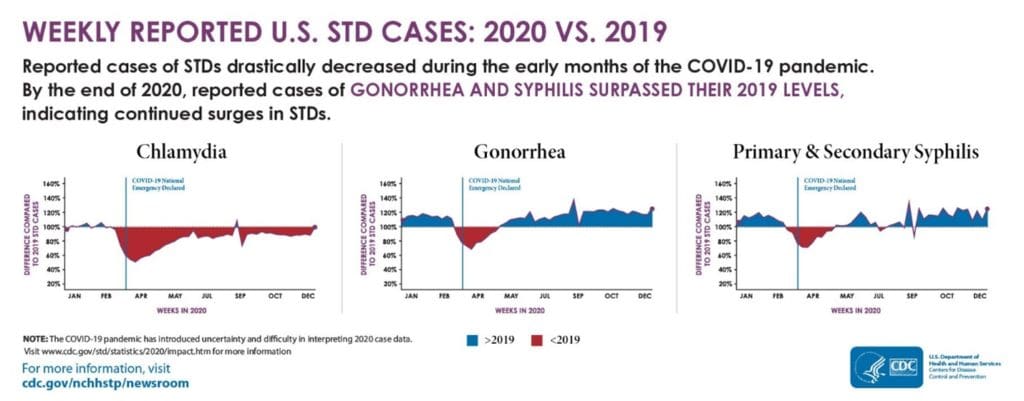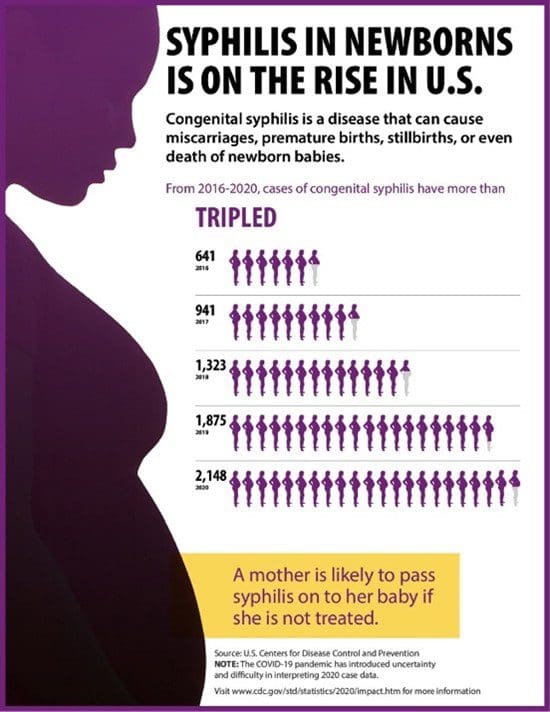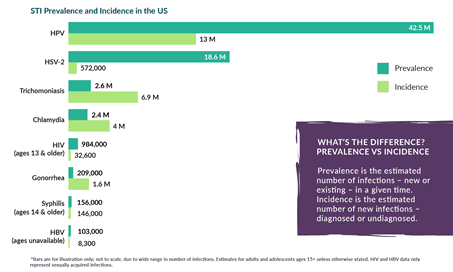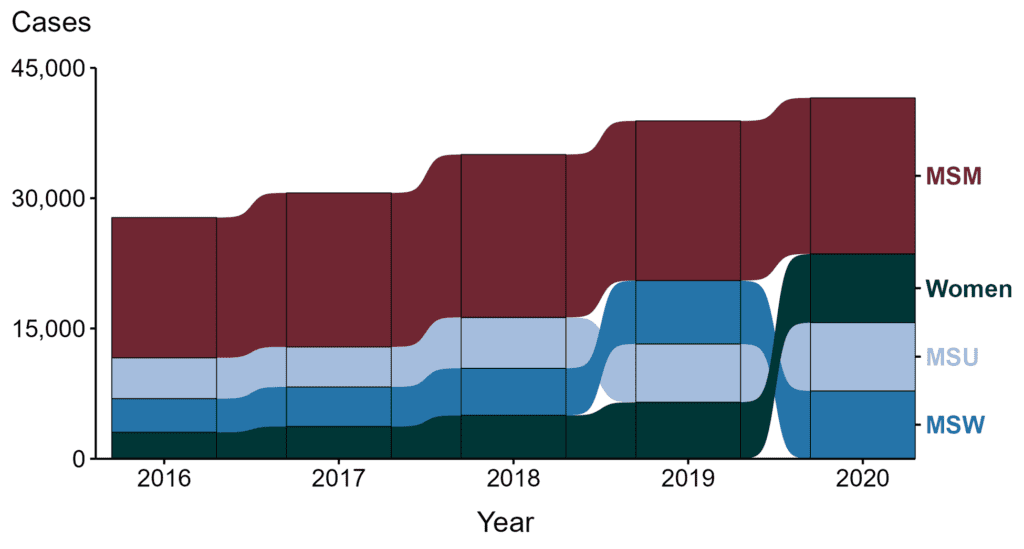
The purpose of this blog is to stimulate thought and discussion about important issues in healthcare. Opinions expressed are those of the author and do not necessarily express the views of CMDA. We encourage you to join the conversation on our website and share your experience, insight and expertise. CMDA has a rigorous and representative process in formulating official positions, which are largely limited to bioethical areas.
App Blogs
In the first year of COVID, STDs still somehow increased across the U.S. What’s behind it?
April 27, 2022
by Steven Willing, MD
Sexually transmitted diseases (STDs) continue to rise. However, according to last week’s press release from the U.S. Centers for Disease Control and Prevention (CDC), it’s apparently got nothing to do with sex.
Unless you’re a county health officer (or a CMDA blogger facing a deadline and desperate for a topic), you probably missed it, but last week was STD Awareness Week. In a press release issued April 12, 2022, the CDC reported that sexually transmitted diseases in 2020 (the most current completed data) managed to surpass 2019 levels in spite of pandemic lockdowns. An early dip at the beginning of 2020 was more than offset by a rebound in the latter part of the year. In this CDC chart, areas below the line represent a decrease over 2019, while areas above the line (shaded in blue) represent an increase. (They suspect the drop in chlamydia was due to decreased screening).

The report further noted that congenital syphilis tripled between 2016 and 2020:

The highest infection rates were among young people, gay and bisexual men and some racial minorities. Yet somehow, amazingly, in its press release, the CDC failed to apprehend any connection between STDs and sexual behavior, instead blaming them on “lack of access to regular medical care, discrimination, and stigma.”
“The COVID-19 pandemic increased awareness of a reality we’ve long known about STDs. Social and economic factors—such as poverty and health insurance status—create barriers, increase health risks, and often result in worse health outcomes for some people,” said Leandro Mena, M.D., M.P.H., Director of CDC’s Division of STD Prevention. “If we are to make lasting progress against STDs in this country, we have to understand the systems that create inequities and work with partners to change them. No one can be left behind.”
Not one word about the types of activity that might actually transmit such a thing as a sexually transmitted disease. While the latest report focused on the rise in syphilis and gonorrhea, their prevalence, as opposed to incidence, is eclipsed by HPV, HSV-2, trichomoniasis and HIV.

As to which demographic groups are most at risk, men who have sex with men (MSM) figure most prominently. In this CDC chart of historical data, MSM are disproportionately represented among syphilis cases, while most of the increase over the last five years has emerged among heterosexual men and women:

It is essential to understand that while the overlap is considerable, MSM is not equivalent to the social category of “homosexual.” According to Twenge et al. (2016), the number of men reporting exclusively same-sex experience is a mere 1.7 percent, while the percentage reporting any same-sex experience rose to 8.2 percent for males and 8.7 percent for females. The large gap between exclusive same-sex experience and any same-sex experience is comprised of bisexuals, homosexuals with some opposite-sex experience, heterosexuals with some same-sex experience, youthful experimentation or sexual malleability. The data is murky, and almost all of it is based on self-reporting, since there is no objective test for determining another’s sexual orientation.
With that very large caveat, the problem appears much greater among self-identified homosexual men. A very recent (2021) report published in the BMJ on nationwide surveillance data from New Zealand concluded that relative to heterosexual men, gay and bisexual men faced:
- A 348-fold increased risk of HIV
- A 163-fold increased risk of syphilis
- A 57-fold increased risk of gonorrhea
It had been recognized for decades that male homosexuals were at increased risk of STDs, explained by increased promiscuity and the inherent danger of anogenital intercourse. However, the prevailing cultural narrative regards these as unjustified and harmful stereotypes. The data says otherwise. In the Relationships in America Survey (2014) from the Austin Institute for the Study of Family and Culture (UT Austin), 45 percent of gay men report more than 20 lifetime partners, versus 11 percent of heterosexual men. At the lower end of the range, only 34 percent of gay men report less than 10 lifetime partners, versus 74 percent of heterosexual men.
This does not prove that gay men are inherently more libidinous than heterosexual men. Indeed, the difference would be predicted by theories of sexual economics. While in heterosexual encounters females act as gatekeepers, in male-to-male relationships the gatekeeper effect is eliminated. Social and cultural forces within gay communities almost certainly play a role. Levels of gay promiscuity clearly dropped in the early years of the AIDS epidemic, when the diagnosis often meant a death sentence. With the advent of more effective treatment, promiscuity among MSM (of whom more than 80 percent identify as homosexual) is again on the rise, with a notable increase over the time period of 2008 to 2014 per CDC surveillance data (reported by Chapin-Bardales et al. in 2019). In the same report, the total partner count among MSM was nearly eight per year, and condom use was declining, not improving.
It has been further established that transmission of STDs is far, far more likely via anorectal intercourse than vaginal intercourse. The physiologic reasons making it inherently dangerous include: 1) the rectum has a much thinner wall; 2) the rectum is relatively inelastic and more vulnerable to trauma; 3) the rectum lacks the same immune defenses; 4) the rectum terminates in a sphincter which is necessary for proper function but an impediment to misuse; and 5) the rectum is colonized with many more bacterial pathogens.
So, to reduce STDs dramatically, the obvious medical advice would be to limit the number of lifetime sexual partners (ideally, one) and abstain from anal intercourse. To its credit, the CDC in fact recommends that MSM minimize the number of lifetime partners. However, there was nary a word regarding the other, other than the dully predictable “use a condom”—as if a thin membrane of latex could magically eliminate all danger.
Considering the CDC’s dire warnings against cookie dough and rare or medium steaks, one would think they’d be all over something as inherently dangerous as anal intercourse. They certainly are aware of the risk; instead, they simply avoid what might be a politically incorrect recommendation. While anal intercourse is strongly connected with male homosexuality (and not unfairly), it is by no means limited to that population. Many surveys show a disturbingly high percentage of heterosexuals also engage in the practice. It’s dangerous, no matter who is doing it, and our public health officials do a great disservice in not denouncing the practice outright.
Throughout the COVID-19 pandemic, the CDC was viewed by some as the paragon of scientific objectivity and by others as deceptive and irredeemably political. Neither is realistic. It is both a scientific institution and a government bureaucracy, and often those two missions conflict. I view the CDC the same way I hope most of my colleagues do: a worthy institution comprised of many dedicated physicians and scientists doing their best to serve the public, but it is not immune from political meddling or ideological bias.
Once again, the overwhelming preponderance of evidence is that the biblical paradigm of human sexuality—lifelong heterosexual monogamy—is the surest pathway to human health and flourishing. Even within that framework, though, certain sexual practices are unequivocally off-limits.

